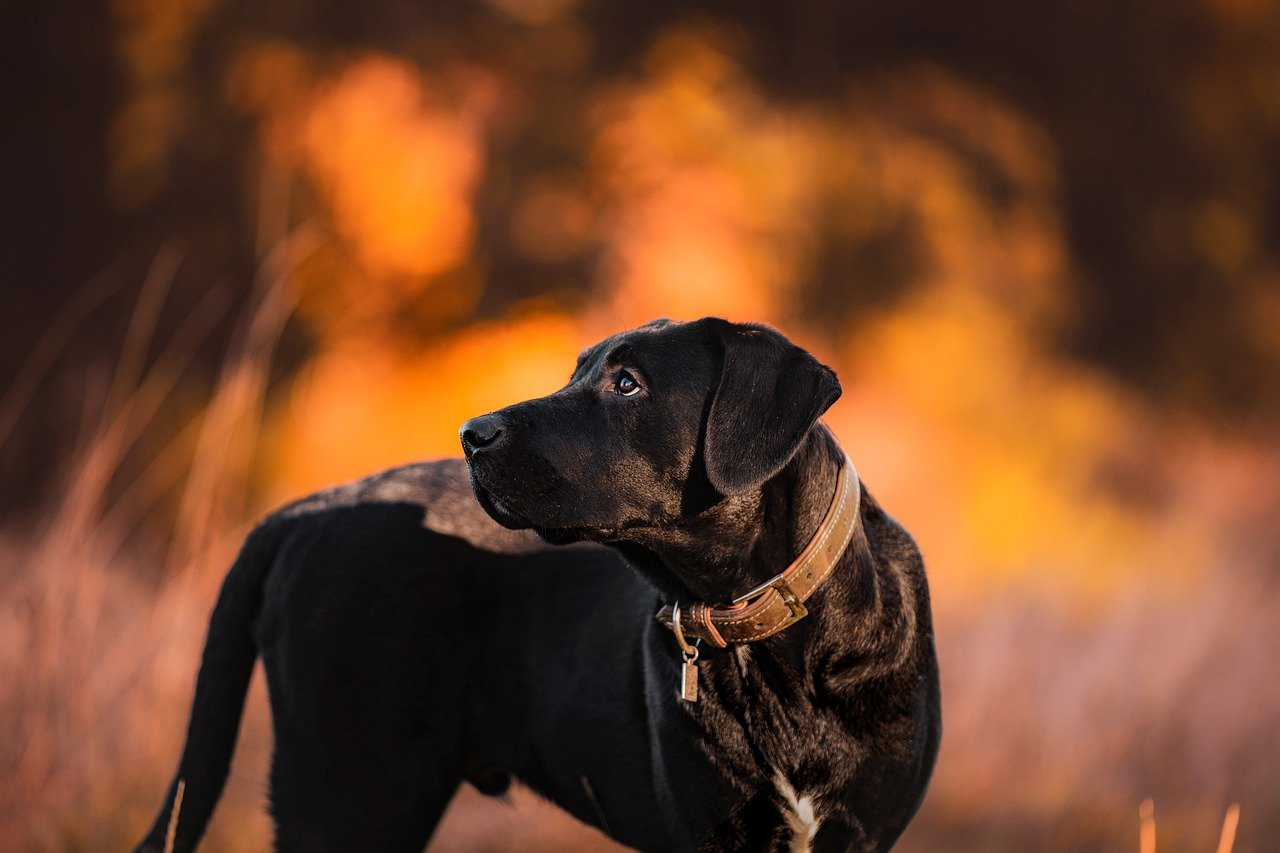This article provides essential information on how to respond effectively to snake bites in dogs, including prevention, symptoms, and emergency treatment options.
Understanding Snake Bites in Dogs
Snake bites are a serious concern for dog owners, particularly in areas where venomous snakes are prevalent. Different types of snakes, such as rattlesnakes, copperheads, and cottonmouths, can pose significant threats to your pet’s health. A snake bite can lead to severe health complications, including tissue damage and systemic reactions that may require immediate veterinary attention.
Common Symptoms of Snake Bites
Recognizing the signs of a snake bite in your dog is crucial for timely treatment. Common symptoms include:
- Swelling at the bite site
- Bleeding or oozing
- Pain or sensitivity
- Rapid heart rate
- Weakness or lethargy
Immediate Signs to Look For
After a snake bite, you may notice immediate physical signs such as swelling, puncture wounds, or bruising. These symptoms can help you assess the situation quickly.
Behavioral Changes After a Bite
Dogs may exhibit unusual behaviors following a snake bite, such as restlessness, whining, or hiding. Understanding these changes can assist in evaluating the severity of the situation.
Possible Delayed Reactions
Some symptoms may not appear immediately. Delayed reactions can include vomiting, difficulty breathing, or seizures, which could arise hours after the bite.
Identifying the Type of Snake
Knowing the species of snake involved can influence treatment. Familiarize yourself with local snakes and their venomous properties to better understand the risks.
First Aid Steps for Snake Bites
Immediate first aid can make a significant difference in your dog’s recovery. Key first-aid steps include:
- Keeping Your Dog Calm: Calmness is essential for your dog’s health after a bite. Techniques to soothe your pet include gentle talking and minimizing movement.
- Applying Pressure and Immobilization: Apply gentle pressure to the bite area and keep the affected limb immobilized to reduce the spread of venom.
When to Seek Veterinary Care
Understanding when to take your dog to the vet is vital. Signs that indicate immediate veterinary attention is needed include:
- Severe swelling
- Difficulty breathing
- Excessive bleeding
Importance of Antivenom
Antivenom can be a lifesaver in severe cases. It is crucial to understand when and why antivenom is administered in snake bite cases to ensure your pet receives the best care.
Preventing Snake Bites in Dogs
Prevention is key to keeping your dog safe from snake bites. Practical tips include:
- Training Your Dog to Avoid Snakes: Use positive reinforcement techniques to teach your dog to stay away from snakes.
- Creating a Safe Outdoor Environment: Landscape your yard to deter snakes, such as removing tall grass and debris.
Conclusion: Keeping Your Dog Safe
In conclusion, understanding snake bites and knowing how to respond can protect your dog. Awareness and preparedness are essential in ensuring your pet’s safety.

Understanding Snake Bites in Dogs
When it comes to our beloved pets, ensuring their safety is paramount. One of the significant threats to dogs, especially in certain regions, is snake bites. Understanding the types of snakes that can pose a risk and the implications of their bites is crucial for every dog owner.
There are various species of snakes that can be harmful to dogs, including rattlesnakes, copperheads, and cottonmouths. These snakes are venomous, and their bites can lead to serious health issues or even death if not treated promptly. The venom from these snakes can cause severe reactions in dogs, including tissue damage, organ failure, and, in some cases, death.
When a dog is bitten by a snake, the effects can vary depending on several factors, including the type of snake, the amount of venom injected, and the size of the dog. Common symptoms of snake bites include:
- Swelling around the bite area
- Pain or discomfort
- Difficulty breathing
- Weakness or lethargy
- Vomiting or other gastrointestinal issues
It is vital to monitor your dog closely after a suspected snake bite. Some symptoms may not appear immediately, and delayed reactions can occur, leading to further complications. If you suspect your dog has been bitten, immediate action is necessary. This includes keeping your dog calm and seeking veterinary care as soon as possible.
In conclusion, understanding the risks associated with snake bites and being aware of the symptoms can significantly improve your dog’s chances of recovery. Regularly educating yourself about local snake species and taking preventive measures can also help keep your furry friend safe.

Common Symptoms of Snake Bites
Recognizing the signs of a snake bite in your dog is crucial for ensuring timely treatment and enhancing the chances of recovery. Snake bites can lead to serious health issues, and being aware of the symptoms can help you act swiftly. Below are the most common symptoms to watch for:
- Swelling: One of the first signs you may notice is swelling at the bite site. This can occur within minutes and may spread to surrounding areas.
- Bleeding: If the snake’s fangs punctured a blood vessel, you might see bleeding from the wound. This can be external or internal, and it’s essential to monitor your dog closely.
- Pain and Discomfort: Your dog may exhibit signs of pain, such as whining, yelping, or being unusually sensitive to touch around the affected area.
- Changes in Breathing: Difficulty breathing or rapid breathing can indicate a serious reaction to the venom. This symptom requires immediate veterinary attention.
- Weakness or Lethargy: A dog that has been bitten may become unusually weak or lethargic. This can be a sign that the venom is affecting their overall health.
- Vomiting or Salivation: Excessive drooling or vomiting can occur as the dog’s body reacts to the venom. These symptoms may develop shortly after the bite.
- Behavioral Changes: Look for unusual behaviors, such as aggression or withdrawal. These changes can indicate that your dog is in distress or pain.
Being vigilant and recognizing these symptoms can be lifesaving. If you suspect your dog has been bitten by a snake, seek veterinary care immediately. Early intervention can significantly improve outcomes and ensure your pet receives the necessary treatment.
Immediate Signs to Look For
When it comes to the safety of your dog, recognizing the immediate signs of a snake bite is crucial. Snake bites can be life-threatening, and prompt action can make a significant difference in your pet’s recovery. Below are some key physical signs to look for if you suspect your dog has been bitten by a snake.
- Swelling: One of the first signs you may notice is swelling around the bite area. This swelling can occur rapidly and may extend beyond the immediate vicinity of the bite.
- Bleeding: If the snake bite has punctured the skin, you may observe bleeding. This can be external or may occur internally, which is harder to detect.
- Pain and Discomfort: Your dog may exhibit signs of pain, such as whining, yelping, or reluctance to move. They may also show signs of distress or agitation.
- Bruising: Look for any discoloration around the bite area, which can indicate damage to blood vessels.
- Rapid Heart Rate: A snake bite can cause shock, leading to an increased heart rate. You may notice your dog’s heartbeat is faster than normal.
- Weakness or Lethargy: Your dog may become unusually tired or weak, showing less interest in their surroundings or activities.
- Excessive Salivation: Increased drooling can occur as a reaction to pain or as a side effect of the venom.
It is essential to observe your dog closely for these signs, especially if they have been in an area known for snake activity. If you notice any of these symptoms, seek immediate veterinary care. Time is of the essence when dealing with snake bites, and quick intervention can save your dog’s life.
Behavioral Changes After a Bite
When a dog experiences a snake bite, it can lead to a range of unusual behavioral changes that may indicate distress or pain. Recognizing these changes is crucial for pet owners, as they can provide valuable insights into the severity of the situation and help in assessing the need for immediate veterinary care.
- Increased Anxiety: After a snake bite, dogs may display signs of heightened anxiety. This can manifest as excessive barking, whining, or pacing. They may also seek comfort from their owners or hide in a corner.
- Aggression: Some dogs might become unexpectedly aggressive following a bite due to pain or fear. This reaction can be dangerous, especially if the dog feels threatened or cornered.
- Loss of Appetite: A dog that has been bitten might refuse to eat or drink. This could be due to pain or nausea caused by the venom or stress from the incident.
- Withdrawal: Dogs may become withdrawn after a snake bite, showing less interest in play or interaction with family members. This behavior can be a sign of shock or discomfort.
- Changes in Mobility: Affected dogs may exhibit limping or reluctance to move. This can be due to swelling or pain in the area of the bite.
Understanding these behavioral changes can help you respond effectively to your dog’s needs. If you notice any of these signs following a snake bite, it is essential to seek veterinary assistance promptly. Timely intervention can be critical in ensuring your dog’s recovery and well-being.
In conclusion, being aware of how your dog behaves after a snake bite is vital. These behavioral changes not only reflect their physical state but also their emotional well-being. Always prioritize their health and safety by consulting with a veterinarian when in doubt.
Possible Delayed Reactions
When a dog is bitten by a snake, it is crucial to monitor for symptoms that may not manifest immediately. While some signs, such as swelling and pain, can appear within minutes, others may take hours or even days to develop. Understanding these potential delayed reactions can be vital for ensuring your pet receives timely medical attention.
One of the most concerning delayed reactions is anaphylactic shock. This severe allergic reaction can occur hours after the initial bite and may present with symptoms such as:
- Difficulty breathing
- Swelling of the face or throat
- Vomiting
- Weakness or lethargy
Another potential delayed symptom is infection. The bite site can become infected days after the event, leading to:
- Increased redness and swelling
- Pus or discharge from the wound
- Fever
Moreover, some dogs may experience neurological symptoms due to the effects of venom on the nervous system. These could include:
- Seizures
- Loss of coordination
- Behavioral changes
It is essential to keep a close watch on your dog for at least 24 hours following a snake bite, as symptoms can develop gradually. If any delayed reactions are observed, seeking immediate veterinary care is critical. Early intervention can be the difference between recovery and severe complications.
In conclusion, being aware of potential delayed reactions can help you act swiftly in case your dog is bitten by a snake. Always consult your veterinarian for specific guidance tailored to your dog’s health needs.
Identifying the Type of Snake
Understanding the species of snake involved in a bite is crucial for effective treatment. Different snakes possess varying levels of venom toxicity, and identifying the specific type can significantly influence the medical response required. Here are some tips to help you identify local snakes and their venomous properties:
- Familiarize Yourself with Local Species: Research the snakes that are common in your area. Many regions have specific species that pose a threat to pets. Resources such as local wildlife websites or herpetology groups can provide valuable information.
- Observe Physical Characteristics: Pay attention to the snake’s size, color, and patterns. For example, coral snakes are known for their bright color patterns, while rattlesnakes have distinctive rattles at the end of their tails.
- Note Behavioral Traits: Some snakes may display specific behaviors when threatened. For instance, a copperhead often freezes and relies on its camouflage, while a garter snake may attempt to flee.
- Check for Venomous Markings: Many venomous snakes have specific markings or features. For example, the triangular head of a pit viper is a key identifier. Understanding these features can help differentiate between venomous and non-venomous species.
Additionally, consider using a snake identification app or guidebook. These tools can assist in recognizing snakes based on your location and the characteristics you observe. Knowing whether a snake is venomous can aid in determining the urgency of treatment required for your dog.
In summary, being equipped with knowledge about local snake species and their venomous properties can empower you to act swiftly and effectively in case of a snake bite. Always prioritize safety and seek professional veterinary assistance when needed.

First Aid Steps for Snake Bites
When your dog suffers a snake bite, immediate action is crucial. Quick and effective first aid can significantly enhance your dog’s chances of recovery. Below are the essential steps to follow in case of a snake bite:
- Stay Calm: Your dog will likely sense your anxiety. Take a deep breath and approach the situation with a calm demeanor to help soothe your pet.
- Keep Your Dog Still: Movement can cause the venom to spread more quickly. Restrict your dog’s activity and try to keep them as still as possible.
- Call for Help: Contact your veterinarian or an emergency animal clinic immediately. Describe the situation and follow their advice while you prepare to transport your dog.
- Assess the Bite: If it is safe to do so, inspect the bite area for swelling, bleeding, or two puncture wounds. This information can be valuable for the vet.
- Apply a Clean Cloth: If there is bleeding, gently apply a clean cloth to the wound to control the bleeding. Avoid using a tourniquet, as this can cause more harm than good.
- Immobilize the Affected Limb: If the bite is on a leg, use a splint or a soft cloth to keep the limb immobilized. This helps to prevent further injury.
- Do Not Suck the Venom: Contrary to popular belief, do not attempt to suck out the venom or apply ice to the area, as these methods can worsen the situation.
Once you have taken these initial steps, transport your dog to the veterinarian as quickly as possible. Remember, timely veterinary care is essential for the best outcome.
Conclusion: Knowing these first aid steps can make a significant difference in your dog’s recovery after a snake bite. Always be prepared and stay informed to ensure the safety and well-being of your furry friend.
Keeping Your Dog Calm
after a snake bite is crucial for their recovery and overall well-being. When faced with such a traumatic experience, dogs can become anxious or frightened, which may exacerbate their condition. Here are some effective techniques to help soothe your pet and prevent further stress.
- Stay Calm Yourself: Dogs can sense their owner’s emotions. If you remain calm and composed, it can help reassure your pet. Speak in a soft, soothing voice to convey a sense of safety.
- Limit Movement: Encourage your dog to stay still to prevent the spread of venom. You can do this by gently holding them or creating a comfortable space where they feel secure.
- Use a Calm Environment: Create a peaceful atmosphere by minimizing noise and distractions. Dim the lights and play soft music to help your dog relax.
- Provide Comfort Items: Familiar items such as their favorite blanket or toy can provide a sense of security. Allow your dog to have access to these items to help soothe their anxiety.
- Gentle Petting: If your dog allows it, gentle petting can be calming. Focus on areas where they enjoy being touched, such as behind the ears or on their back.
- Distraction Techniques: Engage your dog with low-energy activities, such as gentle treats or quiet games, to help take their mind off the situation.
In conclusion, ensuring your dog’s calmness after a snake bite is essential for their recovery. By implementing these techniques, you can help alleviate their stress and promote a more positive healing environment. Always remember that seeking veterinary assistance is vital, even if your dog seems to be calming down.
Applying Pressure and Immobilization
is a crucial step in providing first aid for snake bites in dogs. When a dog is bitten, the immediate response can significantly influence the outcome of the situation. Understanding how to apply pressure and immobilize the affected area can help slow the spread of venom and reduce the risk of severe complications.
Here are the steps to effectively apply pressure and immobilize the affected area:
- Assess the Situation: Before taking any action, ensure that the area is safe for both you and your dog. Look for signs of distress and be cautious of the snake’s presence.
- Apply Pressure: Use a clean cloth or bandage to apply firm, even pressure around the bite site. This helps to control bleeding and can slow the absorption of venom into the bloodstream. It is important to avoid excessive pressure that could cause further damage.
- Immobilize the Limb: If the bite is on a leg or paw, gently immobilize the limb using a splint or by securing it to a stable object. This can prevent movement that may increase the spread of venom.
- Keep the Dog Calm: Stress can exacerbate the situation. Speak soothingly to your dog and try to keep them as still and calm as possible. You may need to gently restrain them if they become agitated.
- Monitor Vital Signs: Keep an eye on your dog’s breathing and heart rate. If you notice any significant changes, it is crucial to seek veterinary assistance immediately.
Remember that while these first aid steps are vital, they are not substitutes for professional veterinary care. Always seek immediate attention from a veterinarian after applying pressure and immobilizing the affected area. The sooner your dog receives appropriate medical treatment, the better their chances of recovery.

When to Seek Veterinary Care
Understanding when to take your dog to the vet is vital for ensuring their health and well-being. Dogs, being curious creatures, can find themselves in situations that may require immediate veterinary attention. Recognizing the signs of distress or illness can be the difference between life and death. Here are some key indicators that suggest your dog needs urgent care:
- Difficulty Breathing: If your dog is struggling to breathe, it may indicate a serious condition such as an allergic reaction, a blocked airway, or respiratory distress. This is a medical emergency that requires immediate veterinary intervention.
- Excessive Bleeding: Whether from a wound or a nosebleed, any form of excessive bleeding should be treated as an emergency. Apply pressure to the wound and seek veterinary help right away.
- Unconsciousness or Seizures: If your dog loses consciousness or has a seizure, it is crucial to get them to a vet as soon as possible. These symptoms can indicate serious neurological issues.
- Persistent Vomiting or Diarrhea: If your dog is vomiting or has diarrhea multiple times within a few hours, it can lead to dehydration. This situation may require veterinary care, especially if accompanied by lethargy.
- Signs of Pain: If your dog is whining, whimpering, or showing signs of distress when moving or being touched, they may be in pain. This could indicate an injury or internal issue that needs to be addressed.
In addition to these immediate signs, it’s important to monitor your dog’s behavior closely. Changes in appetite, energy levels, or bathroom habits can also signal health concerns. If you are ever in doubt, it is always better to err on the side of caution and consult your veterinarian.
Conclusion: Being aware of the signs that necessitate veterinary care can save your dog’s life. Regular check-ups and being attentive to changes in your pet’s behavior are essential components of responsible pet ownership.
Signs of Severe Reaction
Recognizing the signs of a severe reaction to a snake bite in your dog is critical for ensuring their safety and well-being. Immediate veterinary care can be the difference between life and death in these situations. Below are some of the most alarming symptoms that indicate your dog requires urgent attention:
- Difficulty Breathing: If your dog is struggling to breathe, it may be experiencing swelling in the throat or lungs due to venom effects. Watch for signs like open-mouthed breathing, excessive panting, or a blue tint to the gums.
- Excessive Bleeding: Severe bleeding from the bite site or other areas can indicate a serious reaction. If you notice blood oozing or pooling, apply pressure and seek immediate veterinary help.
- Severe Swelling: Rapid swelling around the bite area or other parts of the body can signify a serious allergic reaction or systemic response to the venom.
- Weakness or Collapse: If your dog shows signs of lethargy, weakness, or even collapses, this could indicate shock or severe pain, both of which require urgent care.
- Vomiting or Diarrhea: These symptoms may indicate that the venom is affecting your dog’s digestive system, which can quickly lead to dehydration and further complications.
- Seizures: In some cases, the neurotoxic effects of snake venom can lead to seizures. If your dog experiences convulsions, immediate veterinary assistance is crucial.
In summary, being aware of these severe symptoms can help you act swiftly in an emergency. Always remember that time is of the essence when dealing with snake bites. If you observe any of these signs, do not hesitate to contact your veterinarian or an emergency animal clinic.
Importance of Antivenom
In cases of snake bites, the timely administration of antivenom can be critical for the survival and recovery of affected dogs. Understanding when and why antivenom is administered is essential for pet owners, especially in severe cases. This section delves into the significance of antivenom and the circumstances under which it becomes necessary.
Antivenom is a specific treatment designed to counteract the effects of venom from snake bites. It works by neutralizing the toxins present in the venom, thereby preventing further damage to the body. The decision to use antivenom is typically based on several factors:
- Severity of Symptoms: If a dog exhibits severe symptoms such as difficulty breathing, excessive swelling, or rapid heart rate, antivenom may be urgently required.
- Type of Snake: The species of snake involved plays a crucial role in determining the need for antivenom. Venomous snakes like rattlesnakes, copperheads, and cottonmouths are known to cause serious harm, making antivenom critical.
- Time Since Bite: The sooner antivenom is administered after a bite, the more effective it can be. Delays can lead to irreversible damage, making prompt veterinary care essential.
Veterinarians will assess the dog’s condition and may conduct tests to evaluate the extent of venom spread. In cases where antivenom is deemed necessary, it is administered intravenously, allowing for rapid absorption into the bloodstream.
While antivenom can be a lifesaver, it is important to note that it is not without risks. Some dogs may experience allergic reactions or other side effects. Therefore, it is crucial to have a thorough discussion with a veterinarian about the potential benefits and risks associated with antivenom treatment.
In conclusion, understanding the importance of antivenom and recognizing the signs that warrant its use can significantly improve outcomes for dogs suffering from snake bites. Always consult a veterinarian immediately if a snake bite is suspected, as early intervention is key to saving your pet’s life.

Preventing Snake Bites in Dogs
Ensuring the safety of your dog from snake bites is a crucial responsibility for pet owners. Prevention is the most effective strategy to avoid dangerous encounters with snakes. Here are some practical tips to help keep your furry friend safe:
- Know Your Surroundings: Familiarize yourself with the types of snakes that inhabit your area. Understanding their habitats can help you avoid places where snakes are likely to be found.
- Supervise Outdoor Activities: Always keep an eye on your dog when they are outside, especially in wooded or grassy areas. Active supervision can prevent your dog from wandering into snake territory.
- Training Your Dog: Teaching your dog commands such as “leave it” or “come” can be invaluable. These commands can help redirect your dog away from potential dangers, including snakes.
- Maintain Your Yard: Keep your yard well-maintained by regularly mowing the lawn, clearing debris, and removing tall grass. Snakes are attracted to overgrown areas where they can hide.
- Use Snake Repellents: Consider using natural snake repellents around your property. Certain scents, such as those from essential oils, can deter snakes from entering your yard.
- Install Fencing: If snakes are a common issue in your area, installing a snake-proof fence can provide an extra layer of protection for your dog. Ensure that the fence is buried a few inches underground to prevent snakes from burrowing underneath.
By implementing these strategies, you can significantly reduce the risk of snake bites and create a safer environment for your dog. Remember, awareness and preparation are key components in keeping your pet safe from harm.
Training Your Dog to Avoid Snakes
Training your dog to stay away from snakes is not only a wise decision but also an essential preventive measure to ensure their safety during outdoor activities. With the right techniques and consistent practice, you can significantly reduce the likelihood of a snake encounter. Here are some effective strategies to teach your dog this important skill.
- Desensitization Training: Begin by exposing your dog to controlled environments where snakes might be present. Use a realistic snake toy to simulate the experience. Reward your dog for staying calm and avoiding the toy, reinforcing the behavior you want to see.
- Command Training: Teach your dog commands such as “leave it” or “stay.” These commands can be invaluable in preventing your dog from approaching a snake. Practice these commands in various settings, gradually increasing distractions to ensure your dog responds reliably.
- Positive Reinforcement: Always use treats and praise to reward your dog for good behavior. If your dog successfully avoids a snake or responds to your commands, immediately offer a treat and verbal praise. This helps them associate avoiding snakes with positive outcomes.
- Socialization: Expose your dog to different environments, including areas where snakes are known to inhabit. The more experiences your dog has, the better they will learn to navigate their surroundings safely.
- Controlled Exposure: If possible, arrange for your dog to interact with a trained snake in a controlled setting. Professional trainers can help your dog learn to recognize and avoid snakes without putting them in danger.
In addition to training, it’s crucial to create a safe outdoor environment. Regularly maintain your yard by clearing debris and tall grass where snakes may hide. By combining training with environmental safety measures, you can significantly reduce the risk of snake encounters for your beloved pet.
Creating a Safe Outdoor Environment
Ensuring your yard is a safe haven for your pets is crucial in minimizing the risk of snake encounters. Here are some effective landscaping tips and maintenance advice to help deter snakes:
- Maintain Your Lawn: Regularly mowing your lawn can significantly reduce the likelihood of snakes taking up residence. Snakes prefer tall grass where they can hide, so keeping it trimmed is essential.
- Clear Debris: Remove any piles of rocks, wood, or leaves where snakes may find shelter. Keeping your yard tidy will discourage them from making a home nearby.
- Choose the Right Plants: Opt for plants that are less attractive to snakes. Avoid dense shrubs and opt for low-growing ground covers that don’t provide hiding spots.
- Install Fencing: Consider installing a snake-proof fence, buried at least a foot underground and extending upwards to prevent snakes from climbing over.
- Seal Entry Points: Check for gaps around your home’s foundation and seal them. Snakes can squeeze through surprisingly small openings, so thorough inspection is vital.
- Water Sources: Eliminate standing water in your yard as it attracts rodents, which in turn attract snakes. Ensure proper drainage and remove any stagnant water sources.
- Use Repellents: Natural repellents such as sulfur or certain essential oils may deter snakes. However, their effectiveness can vary, so use them as a supplementary measure.
By implementing these strategies, you can create an environment that is less inviting to snakes, thereby protecting your pets and family. Regular maintenance and awareness are key to ensuring a safe outdoor space.

Conclusion: Keeping Your Dog Safe
In summary, being knowledgeable about snake bites and understanding how to react appropriately can significantly enhance your dog’s safety. It is crucial to recognize that snake bites can pose serious health risks to our furry companions, and as responsible pet owners, we must be prepared. This section highlights the vital role of awareness and preparedness in safeguarding your pet.
Firstly, it is essential to stay informed about the types of snakes that are common in your area and the specific risks they present. Familiarizing yourself with the local snake species will help you understand their behavior and the potential dangers they pose to your dog. Additionally, knowing the symptoms of a snake bite—such as swelling, bleeding, and behavioral changes—can lead to quicker responses in emergencies.
Moreover, practicing preventive measures is equally important. This includes training your dog to avoid snakes, creating a safe outdoor environment, and staying vigilant during walks or outdoor activities. By taking proactive steps, you can minimize the risk of encounters with snakes.
In the unfortunate event of a snake bite, knowing how to provide immediate first aid can make a significant difference in your dog’s recovery. Keeping your dog calm, applying pressure to the wound, and immobilizing the affected area are critical steps that can help stabilize your pet until you reach a veterinarian.
Finally, recognizing when to seek veterinary care is crucial. Signs of severe reactions, such as difficulty breathing or excessive bleeding, warrant immediate attention. Remember that antivenom can be lifesaving in severe cases, so understanding its importance can be a deciding factor in your dog’s treatment.
In conclusion, by enhancing your knowledge and preparedness regarding snake bites, you not only protect your dog but also contribute to their overall well-being. Always stay informed, be proactive, and ensure that your pet is safe while enjoying the great outdoors.
Frequently Asked Questions
- What should I do if my dog gets bitten by a snake?
If your dog is bitten, remain calm and try to keep your dog as still as possible. Apply gentle pressure to the area around the bite to slow down the spread of venom, and seek veterinary care immediately.
- How can I tell if my dog has been bitten by a snake?
Look for symptoms like swelling, bleeding, or unusual behavior. If your dog seems lethargic or has difficulty breathing, these could be signs of a snake bite, and you should act quickly.
- Are all snake bites dangerous for dogs?
Not all snake bites are life-threatening, but many can be serious depending on the type of snake and the amount of venom injected. It’s crucial to get your dog evaluated by a vet as soon as possible.
- How can I prevent my dog from getting bitten by a snake?
Training your dog to avoid snakes, keeping your yard clean, and being cautious during walks in snake-prone areas can significantly reduce the risk of snake bites.
- Is there an antivenom for snake bites in dogs?
Yes, antivenom can be administered in severe cases of snake bites. It’s important to get your dog to a vet quickly, as they can determine if antivenom is necessary.












